Types Of Study Breaks For Every Situation
types of study breaks for every situation
if you realize you’ve been studying for hours: grab a snack to refuel your body and watch a sitcom to refuel your brain. then back to the books.
if you’re feeling stressed out: take some deep breaths, text your friends, maybe stair at a wall for a few minutes. gather yourself.
if you can’t seem to focus: get moving and get outside. take out the garbage, check your mail box, maybe walk your dog. just get moving and get fresh air. it’ll help bring you back.
if there’s something else going on in your life and you can’t get it off your mind: write down what’s going through your head, sort of like a diary entry. it’ll help you work things out.
if you’re just mentally and physically exhausted: set a timer for 25-30 minutes and take a nap. any longer and you’ll hit REM and you’ll wake up feeling just as tired. once you wake up, get some caffeine in you.
if the material is boring as hell: find another way to study. see if there’s a crash course video online about it or draw out what you’re trying to learn in diagrams and pictures to make it fun.
if people around you won’t shut up: listen to some music. soundtrack and classical music is always good because they won’t absorb you as much as music with lyrics. white noise (like ocean waves, rain sounds, etc.) also works.
if you only half understand a concept: call/message a friend who’s not in the class and try to teach the material to them. this will help you mentally work through the material and will help you remember it as well.
More Posts from Isang--mag-aaral and Others
What did you read in September? 💗
the hunger moon, marge piercy
the world’s wife, carol ann duffy
(re-read) the unabridged journals of sylvia plath & her collected poetry
mysteries of small houses, alice notley
gods & mortals: modern poems on classical myths, edited by nina kossman
a strangers mirror, marilyn hacker
aftermath: poems, sandra m. gilbert
someday, i wanna wear a starry crown, jasmine ledesma
incarnadine, mary szybist
stay, illusion, lucie brock-broido
rhapsody in plain yellow, marilyn chin
selected poems ii 1976-1986, margaret atwood
thus were their faces, silvina ocampo
one day less, clarice lispector
& so many more essays & research based pieces but i didn’t bookmark them/have a pdf for them :-( 💛

No im not doing it i dont care

HOW TO WRITE A HIGH-GRADE RESEARCH PAPER
~~~~~~~~~~~~~~~~~~~~~~~~~~~~~~~~~~~~~~~~~~
The first time I had to write a research paper for university was one of the most stressful experiences I’d ever had - it was so different to anything I’d ever done before and caused me so much anxiety! It turned out that I’m pretty damn good at writing research reports and I’m now looking to pursue a career in psychological research.
I have never received less than a First (or 4.0 GPA for you American studiers) in my research papers so I thought I’d share my top tips on how to write a kick-ass, high-grade research paper.
*disclaimer: I am a psychology student, my tips are based on my personal experience of writing up psychological research (quantitative and qualitative); therefore, they may require some adaptation in order to be applied to your field of study/research*
These tips will be split up into the different sections a research paper should consist of: abstract, introduction, methods, results, discussion.
ABSTRACT
The aim of an abstract is to summarise your whole paper - it should be concise, include key-words, highlight the key points of your paper and be written last.
When I say concise, I mean concise! The abstract is what other students and researchers will read in order to decide whether your research is relevant their own work and essentially determines whether or not they’ll read on - they want to know the key details and don’t want to be overwhelmed with information.
I always aim to keep my abstracts under 250 words. I set myself this limit to stop myself waffling and dwelling on unimportant points, it helps me to be really selective of what I include and ensures I’m gripping the reader from the start.
Your abstract should discuss the research rationale, the methods and designs used, your results and the general conclusion(s) drawn. One or two sentences on each of these topics is enough.
Make sure you’re using key-words throughout your abstract as this will also help the reader decide whether your work is relevant to theirs. You can make key-words super obvious by highlighting them in a key at the bottom of your abstract (see below) or just used jargon consistently. Using key-words is also important if you’re looking to get your work published, these words will help people find your work using search engines.

Finally, write your abstract last! An abstract is a summary of your whole research paper which makes it practically impossible to write well first. After writing the rest of your paper, you will know your research inside and out and already have an idea of what key things you need to highlight in your abstract.
INTRODUCTION
For me, the introduction section is always the most intimidating to write because it’s like painting on a blank canvas - massively daunting and leaving you terrified to make a mistake!
The aim of an introduction is to provide the rationale for your research and justify why your work is essential in the field. In general, your introduction should start very broad and narrow down until you arrive at the niche that is your research question or hypothesis.
To start, you need to provide the reader with some background information and context. You should discuss the general principle of your paper and include some key pieces of research (or theoretical frameworks if relevant) that helps your reader get up to speed with the research field and where understanding currently lies. This section can be pretty lengthy, especially in psychological research, so make sure all of the information you’re including is vital as it can be pretty easy to get carried away.
This background should lead you onto the rationale. If you’ve never written a research paper before, the rationale is essentially the reason behind your own research. This could be building on previous findings so our understanding remains up to date, it could be picking up on weaknesses of other research and rectifying these issues or it could be delving into an unexplored aspect of the field! You should clearly state your rationale and this helps lead into the next section.
You should end your introduction by briefly discussing your current research. You need to state your research question or hypothesis, how you plan on investigating the question/hypothesis, the sample you plan on using and the analysis you plan to carry out. You should also mention any limitations you anticipate to crop up so you can address these in your discussion.
In psychology, references are huge in research introductions so it is important to use an accurate (and modern as possible) reference for each statement you are making. You can then use these same references in your discussion to show where your research fits into the current understanding of the topic!
METHODS
Your methods section should make use of subheadings and tables where necessary and should be written in past tense. This can make the (potentially) lengthy section easier to navigate for the reader. I usually use the following headings: participants, materials, design, procedure.
The participants section should describe the sample that took part in your research. Age, gender, nationality and other relevant demographic information should be provided as well as the sampling technique. Personally, I use a table (see below) alongside my continuous prose as an alternative way of viewing my sample population. Please note, if you’re using a table make sure it adheres to your university guidelines.

The materials section of your methods should include any equipment, resources (i.e. images, books, diagrams) or any other materials used in your data collection. You should also reference the program that helped you conduct your analysis. For example, if you are writing a qualitative research paper, you may want to include Microsoft Word in your materials if you use the program to transcribe interviews.
You should then describe the design used in your research. All variables should be identified in this paragraph, if relevant. You should also discuss whether your research is within-groups or between-groups, again only if relevant.
Last is your procedure section - the most important one! You must write this section with enough detail so that anybody could pick it up, read it and conduct the same experiment with ease. You should describe what participants were required to do, how data was collected and it should be written in chronological order! While it’s important to provide enough information, try not to overwhelm the reader with lengthy sentences and unnecessary information.
RESULTS
Your results section’s sole purpose is to provide the reader with the data from your study. It should be the second shortest section (abstract being first) in your research paper and should stick to the relevant guidelines in regards to reporting figures, tables and diagrams. Your goal is to relay results in the most objective and concise way possible.
Your results section serves to act as evidence for the claims you’ll go on to make during your discussion but you must not be biased in the results you report. You should report enough data to sufficiently justify your conclusions but must also include data that doesn’t support your original hypothesis or research question.
Reporting data is most easily done through tables and figures as they’re easy to look at and select relevant information. If you’re using tables and figures you should always make sure you’re stating effect sizes and p values and to a consistent decimal place. Illustrative tables and figures should always be followed by supporting summary text consisting of a couple of sentences relaying the key statistical findings in continuous prose.
DISCUSSION
The discussion section should take the opposite approach to your introduction! You should start discussing your own research and broaden the discussion until you’re talking about the general research field.
You should start by stating the major findings of your study and relating them back to your hypothesis or research questions. You must must must explicitly state whether you reject or accept your experimental hypothesis, if you have one. After stating your key findings you should explain the meaning, why they’re important and where they fit into the existing literature. It’s here that you should bring back the research you discussed in your introduction, you should relate your findings to the current understanding and state the new insight your research provides.
You should then state the clinical relevance of your research. Think about how your findings could be applied to real-life situations and discuss one or two practical applications.
After this, discuss the limitations of your research. Limitations could include sample size and general sample population and how this effects generalisability of findings, it could include methodological problems or research bias! These limitations will allow you to discuss how further research should be conducted. Suggest ways in which these limitations could be rectified in future research and also discuss the implications this could have on findings and conclusions drawn.
Finally, you need to give the reader a take-home message. A sentence or two to justify (again) the need for your research and how it contributes to current understanding in the field. This is the last thing your audience will read so make it punchy!
~~~~~~~~~~~~~~~~~~~~~~~~~~~~~~~~~~~~
That’s it folks! My tips for writing a kick-ass, high-grade research paper based on my personal experience. If you have any questions regarding things I’ve missed or didn’t provide enough detail of, then please just send me an ask!
Also, if any of you would like to read any of my past research papers I would be more than happy to provide you with them :-))
yemen and how to help
help save yemen linktree
two links with more links and resources to help yemen, including what to read to know more, where to donate, petitions to sign, etc.
nothing wrong with being easy to please! give all the books you read five stars. watch that movie again after people tell you that it wasn’t that great. play that band’s new album on repeat, even though it’s not supposed to be as good as their old stuff. refuse to say anything critical about something you thought was cool. be bold in telling grumpy people “actually i liked it a lot!”
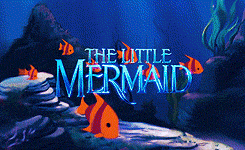
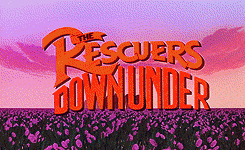


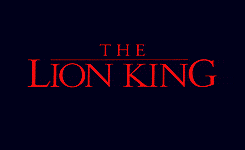

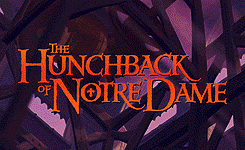
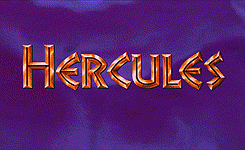
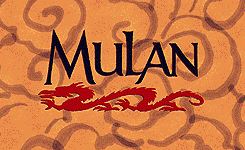


…you’re lucky I’m a stubborn asshole because these took way longer to make than I’d like to admit.





A friendly ghost rest stop before you continue your day! 💗
Loading Penguin Hugs | Instagram | Patreon



truly an old-book-enthusiast haven.
i remember going to this mall once, then having severe anxiety and guilt for not using that time on studying or requirements instead. thankfully, i saw this shop, and although it did not fully relieve me of my guilt— it made me feel like i would also regret it if i wasn’t with my family to see this.
give yourself a break sometimes! ✨

The vehicle was moving steadily when the whispering music playing from my phone stopped. Suddenly, I became aware of the raindrops pelting against my window, creating a lulling harmony. The afternoon downpour colored everything gloomily, from the blinking stoplight to the people passing by with their umbrellas overhead. A sweet, new melody began as I felt the cold leather seat sink beside me.
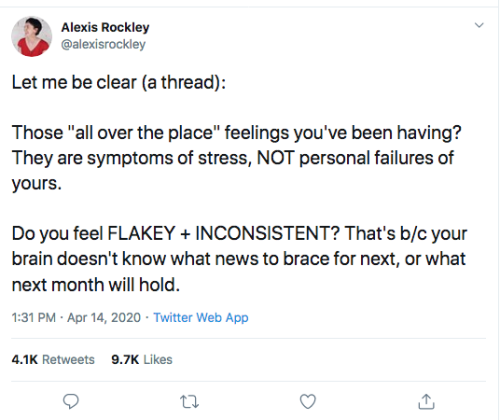
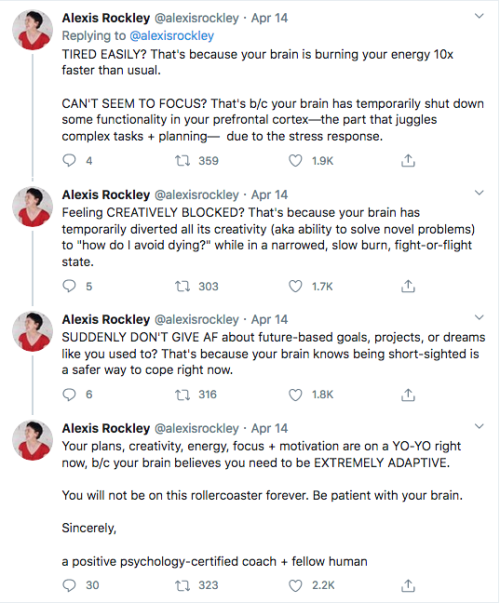

I thought there might be a lot of other people who would benefit from reading this, too.
(Original tweet.)
-
 geographyprof liked this · 2 weeks ago
geographyprof liked this · 2 weeks ago -
 nitsulvr reblogged this · 3 weeks ago
nitsulvr reblogged this · 3 weeks ago -
 crayonpencil liked this · 1 month ago
crayonpencil liked this · 1 month ago -
 spiderkora reblogged this · 1 month ago
spiderkora reblogged this · 1 month ago -
 yoursockstinks reblogged this · 1 month ago
yoursockstinks reblogged this · 1 month ago -
 theintjheadmaster liked this · 1 month ago
theintjheadmaster liked this · 1 month ago -
 fabergenestegg reblogged this · 1 month ago
fabergenestegg reblogged this · 1 month ago -
 fabergenestegg liked this · 1 month ago
fabergenestegg liked this · 1 month ago -
 thisisalexbassonville liked this · 2 months ago
thisisalexbassonville liked this · 2 months ago -
 cargoesbroom liked this · 3 months ago
cargoesbroom liked this · 3 months ago -
 justforfollowingpeople liked this · 5 months ago
justforfollowingpeople liked this · 5 months ago -
 cosmictuesdays liked this · 5 months ago
cosmictuesdays liked this · 5 months ago -
 kiki-miserychic reblogged this · 5 months ago
kiki-miserychic reblogged this · 5 months ago -
 yourstrulyintj liked this · 5 months ago
yourstrulyintj liked this · 5 months ago -
 the-unspoken-wretched-and-divine reblogged this · 6 months ago
the-unspoken-wretched-and-divine reblogged this · 6 months ago -
 annannsv7 liked this · 6 months ago
annannsv7 liked this · 6 months ago -
 miracleswhere reblogged this · 7 months ago
miracleswhere reblogged this · 7 months ago -
 miracleswhere liked this · 7 months ago
miracleswhere liked this · 7 months ago -
 ghostlydazecupcake liked this · 7 months ago
ghostlydazecupcake liked this · 7 months ago -
 avlllr liked this · 7 months ago
avlllr liked this · 7 months ago -
 absorbedinlife liked this · 8 months ago
absorbedinlife liked this · 8 months ago -
 mahouyumesekai liked this · 8 months ago
mahouyumesekai liked this · 8 months ago -
 perfectlyfreerebel liked this · 9 months ago
perfectlyfreerebel liked this · 9 months ago -
 studyignhard reblogged this · 9 months ago
studyignhard reblogged this · 9 months ago -
 genvsis reblogged this · 9 months ago
genvsis reblogged this · 9 months ago -
 tomblr1895 reblogged this · 9 months ago
tomblr1895 reblogged this · 9 months ago -
 ashs-nerd-den reblogged this · 10 months ago
ashs-nerd-den reblogged this · 10 months ago -
 imqueerandadeer reblogged this · 10 months ago
imqueerandadeer reblogged this · 10 months ago -
 imqueerandadeer liked this · 10 months ago
imqueerandadeer liked this · 10 months ago -
 ashthenerd liked this · 10 months ago
ashthenerd liked this · 10 months ago -
 foeofself liked this · 10 months ago
foeofself liked this · 10 months ago -
 xspookystudiesx reblogged this · 10 months ago
xspookystudiesx reblogged this · 10 months ago -
 wellstartasecretsociety reblogged this · 10 months ago
wellstartasecretsociety reblogged this · 10 months ago -
 givemetheshekles liked this · 11 months ago
givemetheshekles liked this · 11 months ago -
 pochiiwrites reblogged this · 11 months ago
pochiiwrites reblogged this · 11 months ago -
 witchestudy reblogged this · 11 months ago
witchestudy reblogged this · 11 months ago -
 katchaoscreator liked this · 11 months ago
katchaoscreator liked this · 11 months ago -
 towerandchariotlady reblogged this · 1 year ago
towerandchariotlady reblogged this · 1 year ago -
 poetfeminist reblogged this · 1 year ago
poetfeminist reblogged this · 1 year ago -
 kotrikittigawa liked this · 1 year ago
kotrikittigawa liked this · 1 year ago -
 tenaciousjellyfishhologram liked this · 1 year ago
tenaciousjellyfishhologram liked this · 1 year ago -
 o2studies liked this · 1 year ago
o2studies liked this · 1 year ago -
 joza07 reblogged this · 1 year ago
joza07 reblogged this · 1 year ago
